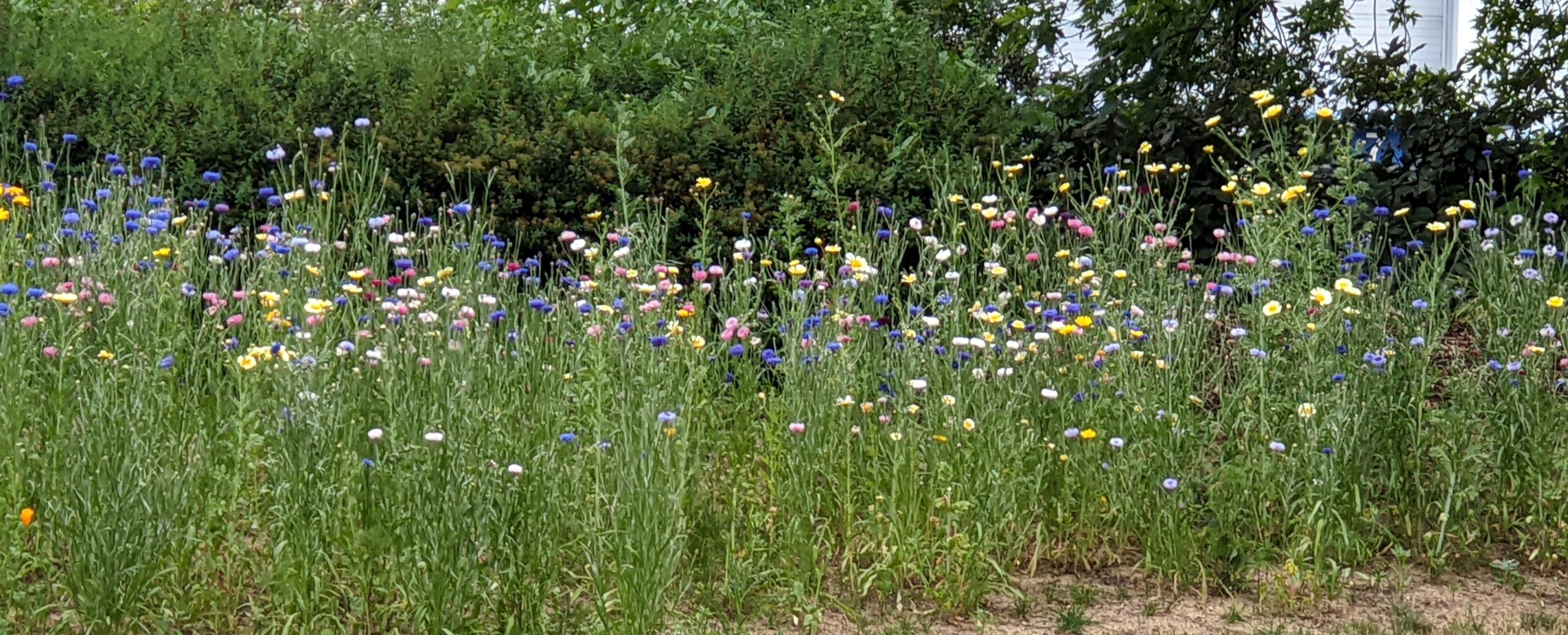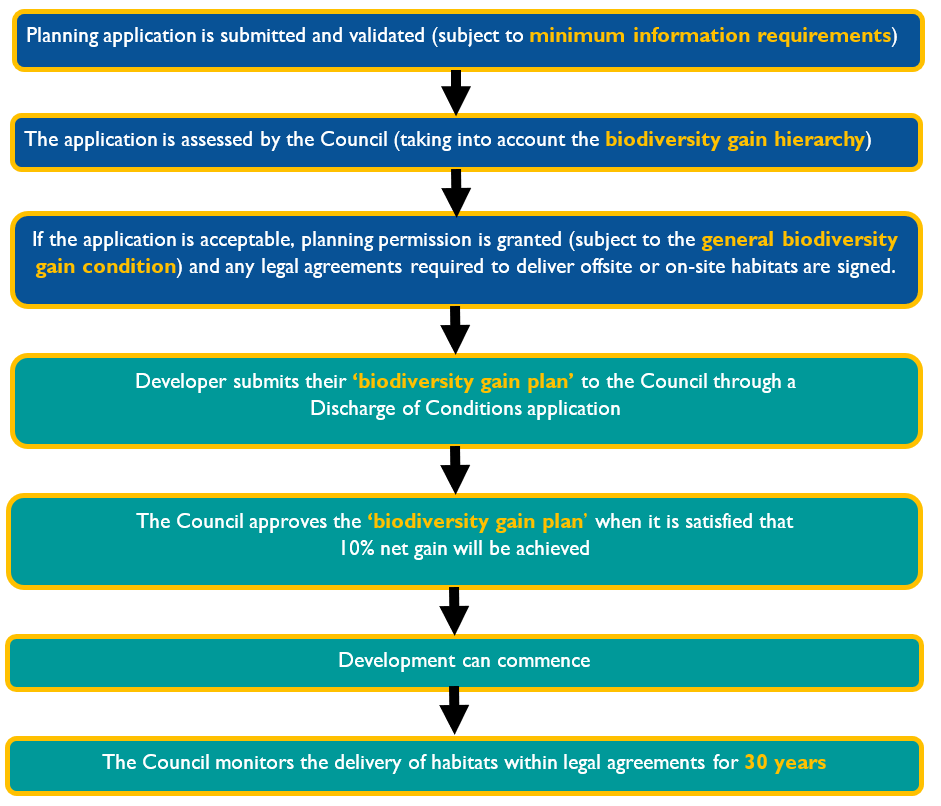
Biodiversity Net Gain
1. Introduction to biodiversity net gain (BNG)
Biodiversity net gain (BNG) is an approach to development and land management that aims to leave the natural world in a better condition than it was beforehand, after first avoiding and minimising harm. In practice, BNG involves numerically comparing the total “biodiversity value” of existing habitats present on a site before development starts with the predicted total “biodiversity value” after development is complete. Development can achieve a “net gain” in biodiversity value by creating more valuable habitats than those present beforehand, or by retaining and enhancing existing habitats.
BNG only refers to habitats, which are used as an approximation for overall “biodiversity value”. In planning, BNG is a separate, additional consideration to the requirements to protect designated sites, Priority and irreplaceable habitats, and protected and Priority species (set out in the Local Plan and other law and policy). Measures to provide enhancements for species, such as nest boxes or bat boxes, are also separate from BNG. For information on these other topics, and general advice on considering biodiversity in planning, see other pages on the Council’s website.
2. How is BNG calculated?
BNG works on the assumption that not all habitats are of the same value for biodiversity: for instance, a woodland supports more wildlife than a concrete car park. Therefore, all habitats have been given different fixed values in “Biodiversity Units”. Biodiversity Units have no meaning on their own, but they quantify the value of habitats relative to each other.
To calculate BNG, an ecologist identifies, maps, and assesses the condition of the existing and proposed habitats on site. The existing information is based on a field survey, while the proposed information is based on the development masterplan landscaping plans. These details are entered into a spreadsheet file called a “calculator” or a “metric”. This file automatically calculates the difference in total values between the pre-development and post-development scenarios and reports the result in “Biodiversity Units” and as a percentage change. If the value after development is greater, then there is a “net gain”. For instance, if the habitats on a site have a baseline value of 1 and a value after development of 1.1, then a “net gain” of 0.1 units or 10% has been delivered.
Within BNG, essentially linear habitats (hedgerows and other boundary features; rivers and other watercourses) are assumed to be one-dimensional, and are entered as lengths (in km). Since lengths and areas are not comparable, separate BNG calculations are made for watercourses, hedgerows and other habitats (“area habitats”). The results of these three calculations are also separate and cannot be combined or substituted for each other.
To deliver a net gain, developers can:
- Remove existing habitats and replace them with new habitats of higher value, or
- Retain existing habitats and enhance their value by improving their condition.
As development often provides habitats of very low or no value (hardstanding, buildings and manmade surfaces), a net gain may not be deliverable on-site in all cases. However, the same measures can be applied to off-site habitats to deliver an overall net gain for a project.
This can be achieved via three main routes:
- Developers create or enhance habitats themselves, using off-site land in their own control (i.e. any land outside of the redline boundary of the planning application). This land must be secured with a legal agreement, recorded on the government’s biodiversity net gain sites register and specifically allocated to the development, and the habitats must be maintained over 30 years. Throughout this page, this is called “registered off-site biodiversity gain” to distinguish it from credits-based options.
- Developers buy credits (“commercial units”) from an off-site provider, who will undertake the habitat creation or enhancement work themselves and provide the necessary units for 30 years.
- Developers buy statutory credits from the government who will fund third parties to undertake the work and provide the necessary units for 30 years. This is intended (and priced) as a last resort.
- BNG: what is required?
From 2024, it is a legal requirement under the Environment Act 2021 that all developments (unless exempt) must demonstrate a net gain of at least 10%. The Council therefore expects non-exempt planning submissions to deliver a BNG, even if there are no other likely impacts on biodiversity. The Council’s ’s ecology team will assess planning applications to ensure that this requirement is met. The Council expects planning submissions to provide the necessary information at the appropriate moments in the planning process.
The Environment Act 2021 requires BNG to be demonstrated numerically using a standardised calculator, the “Statutory Biodiversity Metric”. Different information is needed at different stages of the planning process, with most detail to be provided in a “Biodiversity Gain Plan” after planning approval. The process is summarised in the flow chart below:

The Council has produced detailed technical guidance on how to demonstrate a net gain and meet the Council’s BNG requirements, including which types of evidence to provide at different stages of the planning process. This guidance document is chiefly aimed at ecological consultants preparing planning applications for submission. It summarises the collection of government guidance available here and sets out where we require additional information to the minimum requirements to help us to assess planning applications efficiently. The aim is to minimise delays and costs in the planning process by ensuring applications are “right first time”.
This guidance document can be downloaded below in PDF format.

